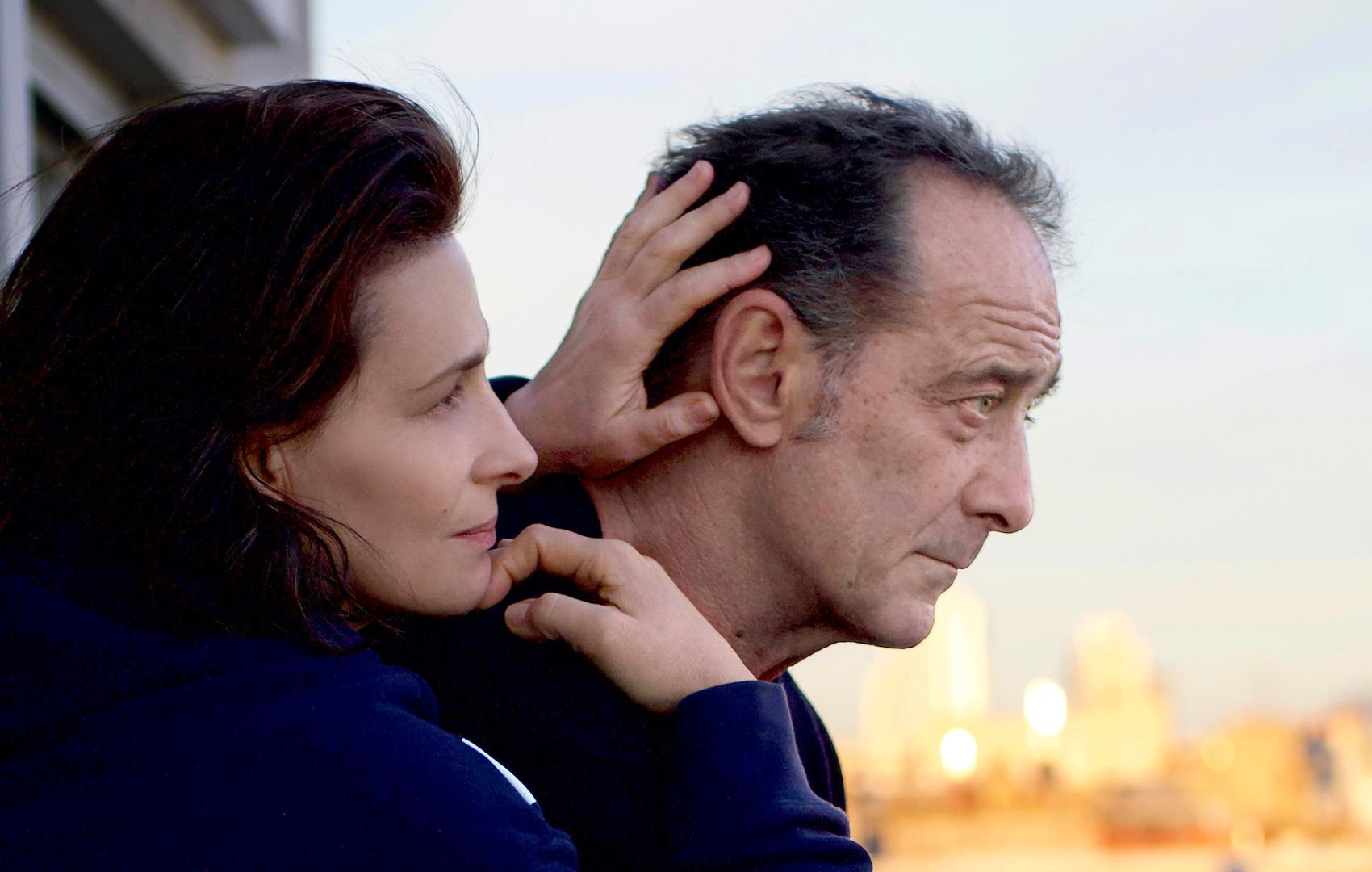In Both Sides of the Blade a romance breaks down and threatens to break up in a stylish apartment overlooking the sweet Parisian skyline. The director is of course Claire Denis, a filmmaker whose last work began in a place that looked like Eden and ended in a spaceship plummeting toward no less than a black hole. A baroque melodrama that might just maybe be a trolling farce, Both Sides of the Blade‘s concerns are of a more earthbound variety–though if the insistent strings of Tindersticks’ score are something to go by, they are of no less importance. (Yeah right.)
Both Sides of the Blade finds Denis collaborating for the second time with playwright Christine Angot, with whom she made 2018’s Let the Sunshine In, now the first of what has become a trilogy with Juliette Binoche. The French actress does her thing again as one half of this film’s wilting relationship, playing Sara, a radio host who used to date a man named François (Grégoire Colin); he runs a local rugby team and remains in contact with her new man, Jean (Vincent Lindon), who was once a friend. The situation only gets stickier when François offers Jean a job. The presence of sport is as cute here as it is superfluous, lying only on the peripheries—we’re reminded, not unkindly, of the Six Nations footage that played on a television set in High Life. Both Sides of the Blade, of course, has far more consequential games in mind.
While a revered presence in French cinema for decades, Vincent Lindon is on a sharp late-career ascendency: winning best actor at the Cannes Film Festival for 2015’s Measure of a Man and bringing the house down last year in Julia Ducournau’s Palme d’Or-winning Titane. As Jean, Lindon is once again playing a man coming to terms with his absent son, and doing much of the emotional heavy-lifting. His previous life seems to hang heavy over Both Sides of the Blade, even threatening to overshadow the drama at times; Jean, we are told, was a promising rugby player in his youth but somehow ended up in jail. His mother was then given custody of his son, Marcus (Issa Perica), who—for a time at least—won’t talk to him.
Not one to shy away from uneasy conversations about race in her work, Denis includes two in Both Sides of the Blade. In one uncomfortable sequence Jean lectures Marcus, who is mixed race, about his terminology and future education. In the other, former French football-turned-author Lilian Thuram appears briefly on Sara’s radio show, via Zoom, to speak about white identity. (His latest book, White Thinking: Behind The Mask of Racial Identity, released last year.) The two scenes appear to echo each other but function far outside the central story, as if parachuted in from another work.
Most everything else in Both Sides of the Blade is fuel for its lover’s quarrels and desires. Binoche begins a joyless affair with François having spotted him with a new lover on her way into work. (Denis pointedly only hints François might have returned her glance–is he trolling the couple? Who’s to know.) The dialogue is at turns argumentative, sublime, absurd. At the moment when Sara decides to give in to her reignited old flame she stands in front of a mirror, addressing herself and the viewer: “Here we go again,” she says wearily, “love and fear… and getting wet.”
For a film of heated passions and illustrious affairs, it’s curious just how little interest Both Sides of the Blade seems to have in sex. Sara and Jean’s time together in bed is bracing a first, Lindon’s big daddy frame a perfect fit for Binoche’s, but it ends with Sara collapsing into her pillow with a refrain of “mio amore, mio amore.” Her first embrace with François, shot gorgeously by Denis’ cinematographer Eric Gautier in sultry slow-motion, is not short on sweep, yet by the time we’re made privy to the full throes of their affair the spark looks to have decidedly, indeed pointedly, gone out. (After being denied a filthy request, François retreats, hilariously emasculated, for a sulk on the toilet.)
It isn’t difficult to imagine Denis–one of the most cerebral, confounding filmmakers we have–constructing Both Sides of the Blade, with its oddly trivial love triangle and omnipresent string section, as a duplicitous farce; a way to upend our expectations of how a film like this should look. (Strange and conspicuous plot holes might offer a clue to this riddle, and I expect others will confirm those suspicions.) But there is only so far one can go with all that and ultimately Both Sides of the Blade––a film shot in a world of masks and lockdowns, and full of what will hopefully one day be curious artifacts of the COVID era–often feels an oddly lifeless film, albeit one from a lifeless time.
Still, there is always the odd moment to take the breath away. At one point Denis has Sara filmed in closeup, lying in bed with the morning sun gently breaking as she wakes up. We’re reminded of another time that Binoche let the light in, swaying to Etta James’ “At Last” as a look of growing contentment glowed across her face. Only at Both Sides of the Blade‘s very start do Denis and Gaultier offer a moment worthy of comparison: Jean cradling Sara in lapping crystal waters on a holiday that feels somehow both recent and faraway. Take me back.
Both Sides of the Blade premiered at the 2022 Berlinale and will open on July 8 from IFC.

